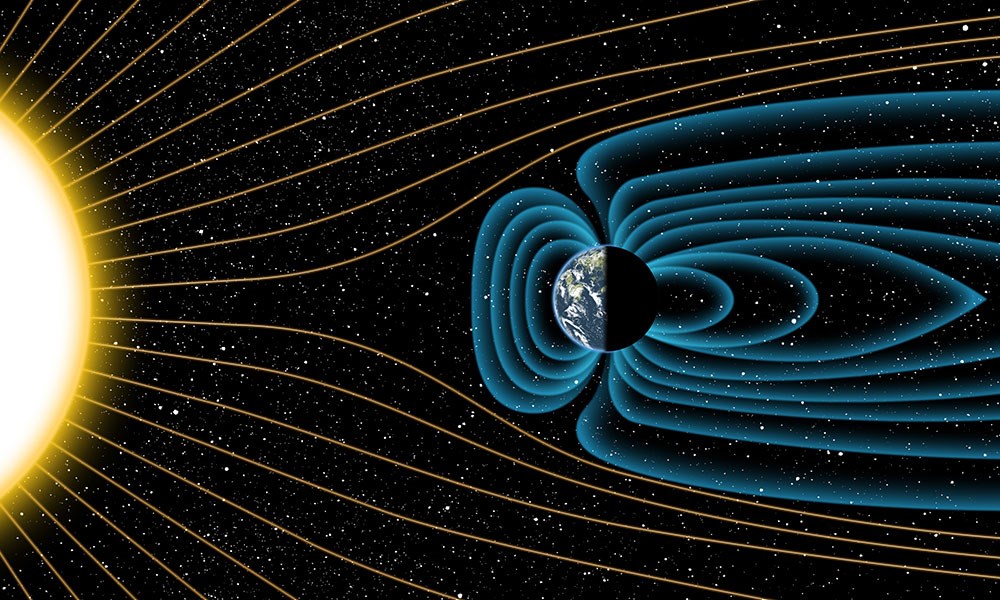[{“available”:true,”c_guid”:”d678278b-f4b7-4fb5-ac92-27557e5d8d7d”,”c_author”:”hvg.hu”,”category”:”elet”,”description”:”Hatalmas károkat okozott a vihar és az áradások, több tízezer ember maradt áram nélkül. “,”shortLead”:”Hatalmas károkat okozott a vihar és az áradások, több tízezer ember maradt áram nélkül. “,”id”:”20231227_Ausztralia_heves_vihar_halottak”,”image”:”https://api.hvg.hu/Img/ffdb5e3a-e632-4abc-b367-3d9b3bb5573b/d678278b-f4b7-4fb5-ac92-27557e5d8d7d.jpg”,”index”:0,”item”:”bca1af05-414a-47f1-8148-cda5760f7287″,”keywords”:null,”link”:”/elet/20231227_Ausztralia_heves_vihar_halottak”,”timestamp”:”2023. december. 27. 15:44″,”title”:”Egy kilencéves kislány is meghalt a kelet-ausztráliai viharokban”,”trackingCode”:”RELATED”,”c_isbrandchannel”:false,”c_isbrandcontent”:false,”c_isbrandstory”:false,”c_isbrandcontentorbrandstory”:false,”c_isbranded”:false,”c_ishvg360article”:false,”c_partnername”:null,”c_partnerlogo”:”00000000-0000-0000-0000-000000000000″,”c_partnertag”:null},{“available”:true,”c_guid”:”e7b13243-ebcf-488b-b647-b614b907e40f”,”c_author”:”Ballai Vince”,”category”:”gazdasag”,”description”:”A napelemesek hullámvasútja, úgy tűnik, véget ér, de a szélenergiás áttörés a fordulat ellenére sem lesz, és velünk marad a legszennyezőbb erőmű is.”,”shortLead”:”A napelemesek hullámvasútja, úgy tűnik, véget ér, de a szélenergiás áttörés a fordulat ellenére sem lesz, és velünk…”,”id”:”20231227_zold_energiatermeles_napelem_szelenergia_geotermikus_energia_fosszilis_nuklearis”,”image”:”https://api.hvg.hu/Img/ffdb5e3a-e632-4abc-b367-3d9b3bb5573b/e7b13243-ebcf-488b-b647-b614b907e40f.jpg”,”index”:0,”item”:”610aae52-ebdb-40e8-b986-e1afed08cfaf”,”keywords”:null,”link”:”/gazdasag/20231227_zold_energiatermeles_napelem_szelenergia_geotermikus_energia_fosszilis_nuklearis”,”timestamp”:”2023. december. 27. 13:15″,”title”:”Úgy zöldül az energia 2024-ben Magyarországon, hogy a nagy része barna marad”,”trackingCode”:”RELATED”,”c_isbrandchannel”:false,”c_isbrandcontent”:false,”c_isbrandstory”:false,”c_isbrandcontentorbrandstory”:false,”c_isbranded”:false,”c_ishvg360article”:false,”c_partnername”:null,”c_partnerlogo”:”00000000-0000-0000-0000-000000000000″,”c_partnertag”:null},{“available”:true,”c_guid”:”290b7ebb-c5e6-4519-9a55-afd285a8b08d”,”c_author”:”HVG360″,”category”:”360″,”description”:”Partvonalra kell szorítani Orbán Viktort, különös tekintettel arra, hogy 2024 második felében Magyarország lesz az Unió soros elnöke, írja a lap szerzője.”,”shortLead”:”Partvonalra kell szorítani Orbán Viktort, különös tekintettel arra, hogy 2024 második felében Magyarország lesz az Unió…”,”id”:”20231227_washington_post_orban_eu”,”image”:”https://api.hvg.hu/Img/ffdb5e3a-e632-4abc-b367-3d9b3bb5573b/290b7ebb-c5e6-4519-9a55-afd285a8b08d.jpg”,”index”:0,”item”:”31363fe4-c085-4b59-ba6d-011b6a3e5d75″,”keywords”:null,”link”:”/360/20231227_washington_post_orban_eu”,”timestamp”:”2023. december. 27. 07:30″,”title”:”Washington Post-kommentár: Jó volna, ha a Nyugat Orbán Viktor ügyében nem áltatná magát”,”trackingCode”:”RELATED”,”c_isbrandchannel”:false,”c_isbrandcontent”:false,”c_isbrandstory”:false,”c_isbrandcontentorbrandstory”:false,”c_isbranded”:false,”c_ishvg360article”:true,”c_partnername”:null,”c_partnerlogo”:”00000000-0000-0000-0000-000000000000″,”c_partnertag”:null},{“available”:true,”c_guid”:”6a0d4419-21f4-4690-adf1-c42663007a95″,”c_author”:”Németh András”,”category”:”360″,”description”:”Egy évvel ezelőtt a világ komoly reményekkel várta az orosz megszállók elleni tavaszi ukrán ellenoffenzívát, ám a végül nyárra halasztott támadással nem sikerült elérni a kitűzött célokat, például az Oroszországot és a Krímet összekötő orosz közlekedési folyosó átvágását. A 2024-es év még nagyobb megpróbáltatásokat rejthet Ukrajna számára.”,”shortLead”:”Egy évvel ezelőtt a világ komoly reményekkel várta az orosz megszállók elleni tavaszi ukrán ellenoffenzívát, ám a végül…”,”id”:”20231227_ukrajna_2024_haboru_oroszorszag_putyin_orban_eu_egyesult_allamok_trump_fordulopontok_2023″,”image”:”https://api.hvg.hu/Img/ffdb5e3a-e632-4abc-b367-3d9b3bb5573b/6a0d4419-21f4-4690-adf1-c42663007a95.jpg”,”index”:0,”item”:”f917b49a-ca57-4917-97e6-e21a6dd996a3″,”keywords”:null,”link”:”/360/20231227_ukrajna_2024_haboru_oroszorszag_putyin_orban_eu_egyesult_allamok_trump_fordulopontok_2023″,”timestamp”:”2023. december. 27. 11:30″,”title”:”A nehéz után egy még nehezebb év vár Ukrajnára”,”trackingCode”:”RELATED”,”c_isbrandchannel”:false,”c_isbrandcontent”:false,”c_isbrandstory”:false,”c_isbrandcontentorbrandstory”:false,”c_isbranded”:false,”c_ishvg360article”:true,”c_partnername”:null,”c_partnerlogo”:”00000000-0000-0000-0000-000000000000″,”c_partnertag”:null},{“available”:true,”c_guid”:”155916b9-b5da-4857-90fd-a16bb560f396″,”c_author”:”hvg.hu”,”category”:”tudomany”,”description”:”A Norse Atlantic Airways és az Avinxt norvég cégek azon dolgoznak, hogy a jövőben biztonságosabb és gyorsabb legyen a repülőgépek karbantartása. A tervek szerint több héten át tartó feladatot tud majd elvégezni a gépük alig néhány óra leforgása alatt.”,”shortLead”:”A Norse Atlantic Airways és az Avinxt norvég cégek azon dolgoznak, hogy a jövőben biztonságosabb és gyorsabb legyen…”,”id”:”20231226_mesterseges_intelligencia_robot_avinxt_norse_atlantic_airways_repules_szervizeles”,”image”:”https://api.hvg.hu/Img/ffdb5e3a-e632-4abc-b367-3d9b3bb5573b/155916b9-b5da-4857-90fd-a16bb560f396.jpg”,”index”:0,”item”:”3c2551bd-6671-49e1-a3a7-913b997d1e02″,”keywords”:null,”link”:”/tudomany/20231226_mesterseges_intelligencia_robot_avinxt_norse_atlantic_airways_repules_szervizeles”,”timestamp”:”2023. december. 26. 13:03″,”title”:”Megépítik a világ legnagyobb mesterségesintelligencia-robotját, amely néhány óra alatt letolja majd hetek munkáját”,”trackingCode”:”RELATED”,”c_isbrandchannel”:false,”c_isbrandcontent”:false,”c_isbrandstory”:false,”c_isbrandcontentorbrandstory”:false,”c_isbranded”:false,”c_ishvg360article”:false,”c_partnername”:null,”c_partnerlogo”:”00000000-0000-0000-0000-000000000000″,”c_partnertag”:null},{“available”:true,”c_guid”:”138da504-b7a8-4638-b5f3-44730e3ea5a0″,”c_author”:”hvg.hu”,”category”:”itthon”,”description”:”December 25-én főként balesetekhez hívták a tűzoltókat, de riasztották őket lakástüzekhez, vízben álló autókhoz is. Keddre is jelentettek egy halálos tűzesetet.”,”shortLead”:”December 25-én főként balesetekhez hívták a tűzoltókat, de riasztották őket lakástüzekhez, vízben álló autókhoz is…”,”id”:”20231226_Karacsony_elso_napjan_15_epulet_gyulladt_ki_az_orszagban”,”image”:”https://api.hvg.hu/Img/ffdb5e3a-e632-4abc-b367-3d9b3bb5573b/138da504-b7a8-4638-b5f3-44730e3ea5a0.jpg”,”index”:0,”item”:”629eec00-5aaf-46db-b4d4-480ab250c965″,”keywords”:null,”link”:”/itthon/20231226_Karacsony_elso_napjan_15_epulet_gyulladt_ki_az_orszagban”,”timestamp”:”2023. december. 26. 09:39″,”title”:”Karácsony első napján 15 épület gyulladt ki az országban”,”trackingCode”:”RELATED”,”c_isbrandchannel”:false,”c_isbrandcontent”:false,”c_isbrandstory”:false,”c_isbrandcontentorbrandstory”:false,”c_isbranded”:false,”c_ishvg360article”:false,”c_partnername”:null,”c_partnerlogo”:”00000000-0000-0000-0000-000000000000″,”c_partnertag”:null},{“available”:true,”c_guid”:”1cdb2bfe-bfb9-451b-8e0e-e82d8982f266″,”c_author”:”MTI / hvg.hu”,”category”:”vilag”,”description”:”Moszkva a két országgal határos északi katonai körzetébe telepítené az év végéig elkészülő kísérleti tüzérségi egységeket. “,”shortLead”:”Moszkva a két országgal határos északi katonai körzetébe telepítené az év végéig elkészülő kísérleti tüzérségi…”,”id”:”20231227_onjaro_lovegek_Oroszorszag_Finnorszag_Norvegia”,”image”:”https://api.hvg.hu/Img/ffdb5e3a-e632-4abc-b367-3d9b3bb5573b/1cdb2bfe-bfb9-451b-8e0e-e82d8982f266.jpg”,”index”:0,”item”:”5c20ba7e-b453-4aad-b735-e7f0f0517935″,”keywords”:null,”link”:”/vilag/20231227_onjaro_lovegek_Oroszorszag_Finnorszag_Norvegia”,”timestamp”:”2023. december. 27. 11:29″,”title”:”Önjáró lövegeket telepít a finn és norvég határhoz Oroszország”,”trackingCode”:”RELATED”,”c_isbrandchannel”:false,”c_isbrandcontent”:false,”c_isbrandstory”:false,”c_isbrandcontentorbrandstory”:false,”c_isbranded”:false,”c_ishvg360article”:false,”c_partnername”:null,”c_partnerlogo”:”00000000-0000-0000-0000-000000000000″,”c_partnertag”:null},{“available”:true,”c_guid”:”e0f4f42b-1f51-4806-8c85-5ab4f5285260″,”c_author”:”hvg.hu”,”category”:”tudomany”,”description”:”Meglepő következtetésre jutott egy több országon átívelő kutatás: azoknál, akiknek mesterséges intelligencia segíti a munkáját, mentális problémák léphetnek fel.”,”shortLead”:”Meglepő következtetésre jutott egy több országon átívelő kutatás: azoknál, akiknek mesterséges intelligencia segíti…”,”id”:”20231227_mesterseges_intelligencia_hasznalatanak_hatasa_az_egyen_pszichejere”,”image”:”https://api.hvg.hu/Img/ffdb5e3a-e632-4abc-b367-3d9b3bb5573b/e0f4f42b-1f51-4806-8c85-5ab4f5285260.jpg”,”index”:0,”item”:”e89cb882-13bd-4105-8619-54533803a19c”,”keywords”:null,”link”:”/tudomany/20231227_mesterseges_intelligencia_hasznalatanak_hatasa_az_egyen_pszichejere”,”timestamp”:”2023. december. 27. 16:03″,”title”:”Egy magányos, kialvatlan alkoholistává tesz a mesterséges intelligencia?”,”trackingCode”:”RELATED”,”c_isbrandchannel”:false,”c_isbrandcontent”:false,”c_isbrandstory”:false,”c_isbrandcontentorbrandstory”:false,”c_isbranded”:false,”c_ishvg360article”:false,”c_partnername”:null,”c_partnerlogo”:”00000000-0000-0000-0000-000000000000″,”c_partnertag”:null}]

We recommend it from the first page













































